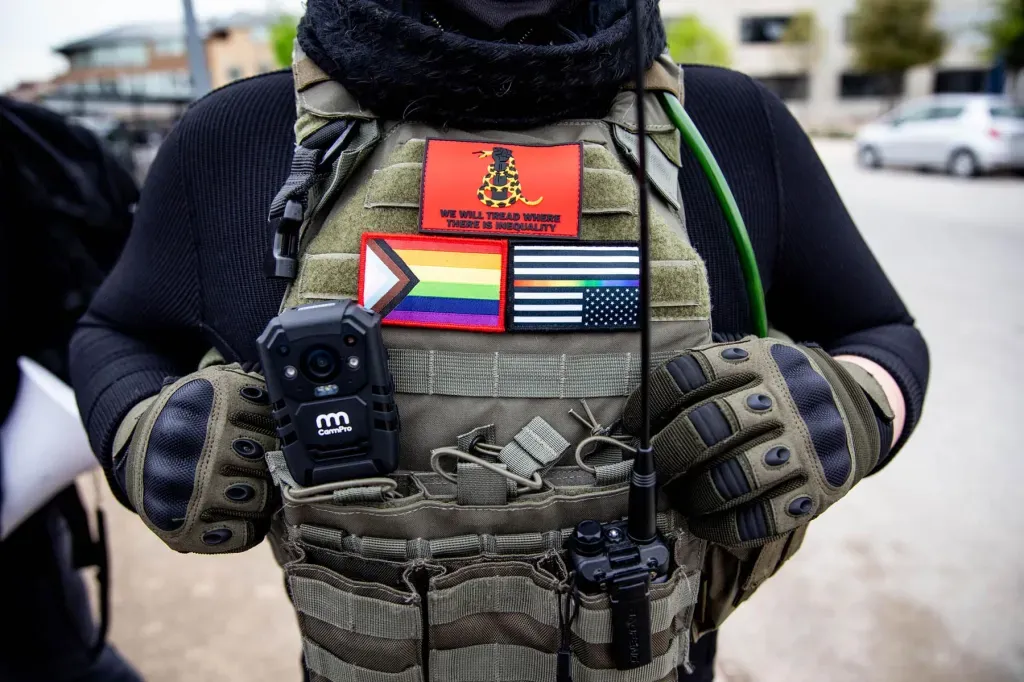How to Build a Community Self-Defense Network
Communities targeted by escalating right-wing violence are learning from their own histories how to keep each other safe.

“We heard there are some antifa over here!”
The shout came from a group of Proud Boys, a far-right street gang, while they approached a picket line organized by the Portland Industrial Workers of the World (IWW) in September 2018. While the IWW, a radical labor union that unionized a local fast-food chain in Portland, Oregon, is certainly antifascist, this was a union action—not an “antifa” protest. But those facts mattered little to the right-wing agitators who had made Portland a flash point in political violence. As the Proud Boys sought to instigate, one IWW member, Sinead Steiner, remembers union activists pivoting in an attempt to de-escalate.
IWW members engaged the Proud Boys in mundane discussions about labor law while other demonstrators began using silly chants to lower the emotional temperature. The method was effective, no one faced harm, and the union action continued. This was not the first time the far right had threatened the IWW, so members knew they needed to walk into any protest with a nimble plan that included employing some form of community self-defense.
As Donald Trump ascended to power, there was a dramatic growth in hate crimes as well as far-right and racist groups such as the Proud Boys, Oath Keepers and militias, and other neo-Nazi formations. They stormed U.S. cities, often holding rallies intended to provoke counterprotesters whom they could attack. As a result, there was a growth in left-wing formations, including the John Brown Gun Club and the Socialist Rifle Association, that consider armed community self-defense a necessary component of safety, which in this case means protecting activists from racist militants.